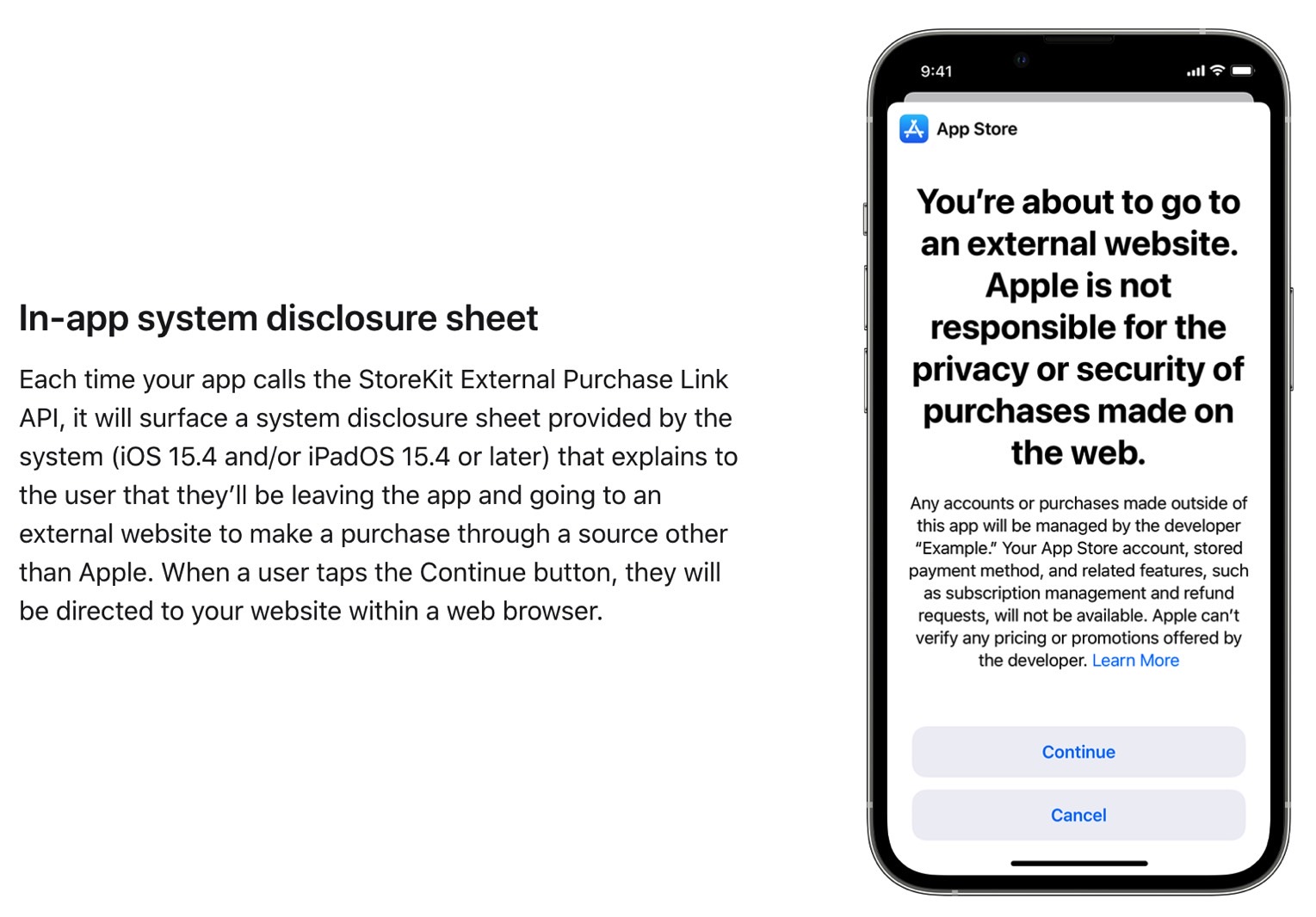It’s official: Apple will support third-party payments for iPhone apps in the US. But that’s not as good as it sounds for developers or app buyers. Apps won’t get any cheaper now that developers can charge for digital content on their websites because of Apple’s fees.
Apple will continue to collect 27% or 12% royalties from iPhone apps instead of the current 30% and 15% respectively. It is also up to the developer to report earnings to Apple and take care of customer support and payment security. As a long-time iPhone user, I will continue to pay for digital content in the App Store through Apple, even if I pay that 30% fee.
There is an easy way for iPhone users to buy cheaper apps. And developers can implement everything with ease. I’ll describe the process below, but before we get there I’ll warn you that it probably won’t work because of human nature.
How the 27% fee works.
Apple has a new support document for developers that explains how they can add in-app links to their websites and how they can process payments for digital content. I will direct your attention to the following paragraph which details the transactions that Apple will order:
Apple charges a commission for digital purchases initiated within seven days of sending the link, as described below. This won’t cover all the transactions that Apple has made possible through the App Store, but it’s a reasonable way to account for the significant value that Apple provides to developers, including the facilitation of related transactions.
That’s actually a big deal. Any iPhone app purchase made on the developer’s website seven days after the user clicks on the in-app link to said website will not be subject to the 27% or 12% tax.
Developers can they offer cheaper apps and subscriptions outside of the App Store. In turn, customers can buy cheaper digital content. But only while both sides are doing the 7-day dance. I will explain below.

What developers must do
Let’s say you put a link on your website like the ones Apple allows (see above). Then you should create a landing page that tells users they can buy the app or subscription now and pay roughly the same price as the App Store, or wait 7 days and get a discount.
You can choose which savings to pass on to the customer. You will be required to pay the fees required by your payment processor and any customer support that you will be required to perform for this sale. And you might want to keep some of that 27% for yourself. But after 7 days you can sell your app at a better price.
The problem is making sure the customer makes the purchase. You can customize that landing page to have a signup form that will allow you to email the customer after the 7-day window closes. You can also add a link that sets a reminder on the user’s calendar 7 days after the click.
What buyers must do
You own an iPhone/iPad and want to buy an app or in-app content on your device, and you see a link from the developer informing you that better prices are available on their website.
Click on that link and you are then taken to a page that allows you to pay for the app immediately or within 7 days. You should just save the landing page in your browser and come back after 7 days to get the lower price. Set a calendar reminder and return to the browser tab you just saved.
It is critical that you do not return to the application and click that external link again. That would probably trigger another 7 day waiting window.

Why it won’t work
As you can see, there is a way to get cheaper apps, but it involves more work. Both from the developer, who has to create all those information pages, and from the customer, who has to wait.
I’ll deal with the waiting part first. It will not happen. If you’ve convinced me to buy an app or in-app content on iPhone, I don’t want to just now. I want it yesterday. I will buy it right then and there. I will absolutely not wait 7 days. And if I somehow managed to wait that long, I could forget about it. Or, god forbid, click the app link and then go through the whole thing again.
For developers, ensuring sales at generally the same price as the App Store is additional work. That is if you want to pay most of the 30% savings to customers. I doubt that will be the case for many developers. It’s not about greed. Developers will now have to pay transaction fees. And they will have to invest in customer support.
I also see a scenario where some developers will want to keep most of that 27% fee or all of it for themselves. If they somehow manage to convince customers to pay for their apps 7 days after an iPhone click.
Can Apple make it easier for everyone? Yes, it could. It could allow iPhone sideloading, third-party app stores, and third-party payments worldwide and end up with a PR nightmare. I’m sure many, like me, would choose the Apple way. But Apple will continue this unnecessary fight as long as it can.
The good news is that we’ll soon see what a side-loading iPhone looks like, thanks to the EU’s Digital Markets Act (DMA). Apple must enable this feature in the first week of March.